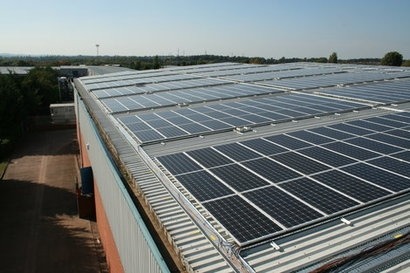
The latest analysis by global consultancy IHS shows that nearly 13 GW were installed in China during the first six months of the year, driven by the country’s Feed-in Tariff (FIT) cut due on June 30th. The resulting rush in installations will result in a major slump in demand in the third quarter of the year, with installations falling by 80 percent. Installations will recover to a degree in the fourth quarter but will still be limited by the Chinese government’s intent to keep below the 20 GW threshold for the full year. This pattern in China will drive a global slowdown in installations in the second half of this year, triggering a sharp adjustment in pricing, which has already started to fall sharply for products due to be shipped in the second half of 2016.
Offered prices for modules are now significantly lower than in the first quarter, as suppliers seek to shift volume ahead of the slump in demand in China. In addition to the slowdown in the Chinese domestic market, the expansion of production capacity that has been ongoing for some time is also putting pressure on pricing, as suppliers seek to keep utilisation levels high, and inventory low. Coupled with price declines is the rise of low-cost end-markets, such as India and Latin America, which are consuming larger volumes at lower prices.
Prices for Chinese tier-1 modules shipped to China will range from $0.44 per watt to $0.46 per watt (excluding value-added taxes) in the second half of 2016. Prices as low as $0.43 per watt for multi-crystalline modules were quoted at the recent SNEC PV Power Expo show in Shanghai.
At this price, photovoltaic (PV) modules suppliers will be selling at a net loss in China. Gross margins of module suppliers will drop from approximately 20 percent in the first half of 2016 to low-to-mid single digits in the second half of this year. Many of these suppliers are under extreme financial pressure with precarious balance sheets. As a result, a further shakeout and consolidation in the industry is likely for suppliers that are unable to operate over the next two to three quarters at such limited margins.
Slowing demand for modules in the United States, the second largest market in 2016, is adding to manufacturers’ woes. While installation demand continues to be exceptionally strong in the US, inventory levels also remain high there, due to the vast quantities of Chinese modules shipped at the end of 2015 and even earlier. This situation is further exacerbated by developers pushing out plans to complete solar projects in 2017, now that the investment tax credit (ITC) has been extended beyond the end of this year. Prices for photovoltaic (PV) modules shipping in the fourth quarter have begun dropping sharply in the US, declining as much as 10 percent, since the first half of 2016.
For additional information:

